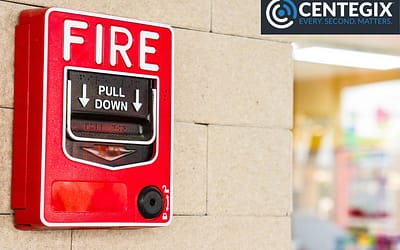Healthcare organizations have a responsibility to prioritize workplace violence prevention and create a culture of safety in their facilities. However, in my years of experience working in healthcare, I’ve observed a common problem. While most healthcare leaders are deeply concerned about workplace safety, their concerns are often muted by competing interests, a lack of resources, and/or an ill-defined pathway to success.
The need for violence prevention and nurse safety in hospitals and other medical facilities has never been more urgent. Most healthcare professionals experience physical and verbal abuse, with nurses being the most common targets. One study found that registered nurses were the most common victims, accounting for 62% to 64% of assaults each year.
To protect nurses and other healthcare professionals from violence, organizations must undertake comprehensive safety planning, starting with a thorough risk assessment. This critical step helps healthcare organizations better understand and mitigate workplace violence.
Common Obstacles That Hinder the Risk Assessment Process
Like most layers of a workplace safety plan, there’s a cost associated with performing risk assessments. Healthcare organizations need to adequately budget to perform an assessment and implement the necessary mitigation strategies based on the results.
Federal and state funding is available to help healthcare organizations implement safety plans. However, this funding often requires healthcare facilities to conduct highly structured and complex risk assessments. Some organizations achieve this through a variety of approaches with success, while others struggle to meet funding requirements.
Another obstacle is the depth and breadth of the gaps and associated solutions identified through thorough risk assessment. If a healthcare organization lacks the necessary resources to mitigate the risks identified in the assessment, the process becomes a wasted effort.
When conducting an assessment, organizations should start by identifying safety pain points and prioritizing who (workforce demographics), where (institutional location), and which processes would benefit the most from resource allocation and timely intervention. For example, we know nurse safety is a common pain point. However, drilling down even further helps organizations create strategic safety plans. A 2020 study by the Bureau of Labor Statistics found that 73% of victims of workplace violence in the private sector were female. Hospitals can use this data to understand why this occurs and create targeted risk assessments that focus on the work patterns of female staff members and other groups at greater risk. Trends and patterns can vary from organization to organization. So, it’s crucial that leaders assess the unique needs of their facility.
The End Goal: Protecting the Organization’s People
Nurses, doctors, and other healthcare professionals provide an invaluable social service, yet they’re subjected to more abuse than workers in any other industry. This abuse often comes from patients experiencing serious health issues or upset family members dealing with highly emotional situations involving loved ones. However, these circumstances don’t warrant physical or verbal abuse toward healthcare professionals, and such actions cannot (and must not) be tolerated.
The U.S. is facing a nursing shortage. Long hours, heavy workloads, and emotional exhaustion take a heavy toll on nurses, forcing many to leave the industry. The threat of workplace violence exacerbates the situation. Moral injury or physician burnout has also resulted in many leaving the practice of medicine, and recent trends in violence have only added to these phenomena, amplifying concerns over the predicted physician shortage in years to come.
Healthcare leaders have a responsibility to support healthcare worker safety and protect those caring for patients. Administrative and clinical staff also need better protection from workplace violence perpetrated by unauthorized guests or authorized guests who become disgruntled.
So far, we haven’t done enough to increase workplace violence prevention on a national level. Risk assessments are an effective way of moving the needle in the right direction.
Setting the Stage for Effective Risk Assessments
The success of any risk assessment depends on how well it’s planned and executed. This starts with outlining an assessment calendar. Healthcare organizations creating a new safety plan or overhauling an existing one should conduct an initial assessment and schedule annual reassessments.
It’s also crucial to conduct mini-assessments after an incident. Even if a crisis is averted, organizations can still learn a lot from post-incident evaluations. They help safety teams identify vulnerabilities, verify whether staff have followed safety policies, and determine whether strategies activated during the prior risk assessment are effective. We routinely perform root cause analyses for clinical bad outcomes and near misses; we should do the same for workplace safety events.
Assembling a Safety Team
An organization’s workplace safety team must own the risk assessment process and work closely with staff to develop and implement mitigation procedures. The number one factor in the Occupational Safety and Health Administration’s (OSHA’s) guidelines for safety in healthcare is management commitment combined with worker participation.
A workplace safety team should include employees with the authority to make decisions and the expertise to analyze and assess safety data. Critical members of a strong safety team may include:
- A chief medical officer
- A chief nursing officer
- Experts from high-risk units
- Security personnel
- The risk assessment team
- A human resources professional
Safety planning should also include staff and patient advocates. This enables the safety team to get a wide range of perspectives, which is extremely helpful.
Improving Workplace Safety, Step-by-Step
Once a safety team is in place, healthcare organizations can implement protocols for successful risk assessments and workplace safety. This isn’t a set of rules. Instead, it’s a holistic approach that can evolve over time.
- Step One: Acknowledge the value of healthcare worker safety and a violence-free workplace and exhibit equal commitment to the well-being of staff and patients.
- Step Two: Allocate the appropriate authority and resources to members of the safety team.
- Step Three: Assign the different elements of the workplace violence prevention plan to the appropriate team members and confirm that managers and supervisors understand their obligations for accountability.
- Step Four: Implement appropriate recommendations made by the safety committees. For example, safety technology, such as the CENTEGIX CrisisAlert™ wearable duress button, can be leveraged to enable nurses and other providers to summon immediate help when needed, and help organizations better gather and track data.
- Step Five: Establish a comprehensive program of medical and psychological counseling and a method for debriefing workers who’ve experienced or witnessed assaults or other violent incidents.
- Step Six: Create policies that support successful reporting, recording, and monitoring of incidents. It’s also essential to prevent reprisals against workers who report safety incidents in good faith.
Implementing these action items sets healthcare organizations up for effective workplace safety, emergency response, and overall violence prevention.
Post-Assessment Procedures
After completing a risk assessment, an organization should create a plan to address unfulfilled needs. If there’s a limitation to the safety plan, it’s crucial to prioritize and escalate it from financial and operational standpoints.
Creating a plan helps healthcare organizations move closer to the culture of safety they have in mind for their staff. However, there’s a misconception that once an organization has discovered safety vulnerabilities, it’s accountable for fixing them right away. In reality, once a risk assessment is complete, an organization doesn’t need to execute all recommended mitigations or immediately implement solutions. It’s less about making quick fixes and more about establishing a system that works. The goal is to create an action plan that shows incremental improvement in safety through thoughtful programmatic development and prioritization of resource allocation. Such prioritization can be aided by assigning values in domains such as ease of implementation, the seriousness of the vulnerability it will address, and the number of workers such a change may help to protect.
Tracking incidents and analyzing data is the final key component of post-assessment procedures. Safety teams should regularly review the number of violent incidents that occur within a given period, the nature of each incident, and the circumstances under which they took place. These evaluations help teams identify ways to adjust the safety plan and reprioritize action items.
Identifying minor issues enables an organization to make corrections that have big impacts on healthcare worker safety and the well-being of staff and patients. It’s essential for the safety team to pay close attention to incidents and maintain a proactive approach when making actionable changes.
Regulations Could Prompt Organizations to Implement Violence Prevention Best Practices
While many healthcare organizations proactively work toward workplace violence prevention and healthcare worker safety, some hospitals and clinics simply don’t have the resources to adequately address this important concern. Despite an uptick in incidents and severity of workplace violence, facilities that lack funding may continue to struggle to invest in enhanced safety measures.
But there’s a silver lining: An increase in legislative and regulatory action may lead to increased funding, allowing more healthcare organizations to implement the safety plans they’ve always wanted but couldn’t afford. Organizations may not like being told what to do, but if state and federal governments can provide funding in addition to those safety mandates, I would welcome their intervention and support.
The bottom line is that the healthcare industry is struggling and needs help. Medical facilities are caring environments, but violence has changed them into unpredictable and often frightening settings. Healthcare workers and patients deserve to be protected, but many obstacles make this easier said than done. Regulatory measures and legislative intervention can break down these barriers, ensuring that nurse safety and workplace violence prevention become a reality.
Best Practices in Healthcare Risk Assessment
In addition to taking a methodical approach to risk assessment, healthcare organizations benefit from creating and adhering to a set of best practices.
- Put People First: Healthcare organizations have a moral obligation to protect their staff. When employees know that management truly cares, they’ll feel happier and more confident in their ability to provide high-quality care and an exceptional patient experience.
- Utilize Staff Surveys: Employee surveys are effective tools for gauging how the staff feels about a safety plan. This is an opportunity for organizations to spot safety gaps and discover which workers are more vulnerable to violence.
- Partner with Law Enforcement: Healthcare organizations should collaborate with first responders and local law enforcement to receive additional support during high-risk incidents. These agencies can help with drills and safety planning for natural disasters, mass casualty events, and even smaller-scale incidents that endanger those in healthcare settings.
By prioritizing the health and well-being of staff while engaging the community in facility response protocols, organizations can enhance nurse safety and foster a culture where both staff and patients feel secure.
About the Author
Dr. Kevin Klauer is the current president and CEO of Shepherd’s Hope, which provides free, quality healthcare to uninsured children, women, and men in Central Florida. Previously, he served as the CEO of the American Health Information Management Association. He also served as system chief medical officer for HCA Florida Ocala and West Marion hospitals, and chief medical officer, enterprise chief risk officer, and executive director of the Patient Safety Organization for TeamHealth. Dr. Klauer is the former CEO of the American Osteopathic Association. He is also an assistant clinical professor at the Michigan State University College of Osteopathic Medicine, assistant clinical professor at the Ohio University Heritage College of Osteopathic Medicine, and assistant clinical professor at the Orlando College of Osteopathic Medicine.
Strengthen Nurse Safety at Your Healthcare Facility
CENTEGIX® helps healthcare organizations enhance nurse safety with innovative tools that de-escalate situations before they become violent and improve emergency responsiveness.
Learn more about CENTEGIX CrisisAlert wearable duress button and how to upgrade your facility’s safety plan.












